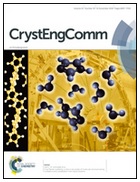Molecular and vibrational dynamics in a widely used calcium channel blocker, felodipine form I (FLD), have been thoroughly explored by combining periodic density functional theory (plane-wave DFT) with solid-state nuclear magnetic resonance (NMR), high-resolution quasielastic neutron scattering (QENS) and inelastic neutron scattering (INS) experiments. The crystallographic structure of FLD is found to be strongly stabilized by a manifold of stacking interactions, highly immobilizing the molecular frameworks and bringing on considerably anharmonic lattice dynamics, further probed by combining ab initio molecular dynamics simulations with phonon calculations. The performance of modern van der Waals corrections to density functional theory has been critically examined and compared with the results of the INS and NMR experiments. The experimental results uncover rich internal reorientational dynamics, spanning almost four orders of magnitude on the time-scale. On the basis of the combined experimental and computational protocols, the relaxation processes have been probed in a broad range of temperatures and frequencies and characterized in terms of their type, time scale and the associated activation barriers. The internal molecular mobility of FLD can be associated with the reorientational dynamics of four methyl groups, accompanied by high-amplitude librations of an alkyl ester side chain. Noticeably, internal molecular reorientations dominate above ca. 100 K, whereas motions of considerable quantum nature are clearly observed at low temperatures. In such a way, a consistent picture of the molecular dynamics in the most stable form of FLD is provided, facilitating our understanding of the relationships between the crystal environment, molecular mobility and conformational flexibility in this important pharmaceutical solid.

